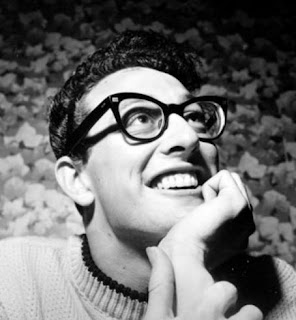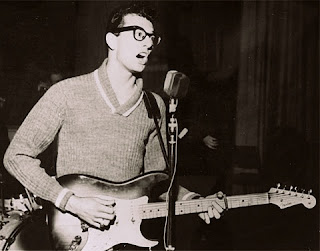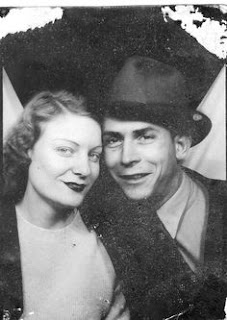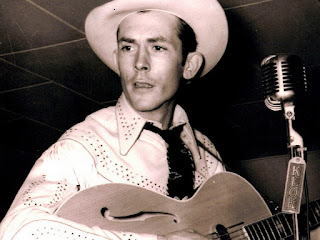A trailer for David Bowie’s forthcoming single Lazarus has been made available ahead of its release on 18 December. Taken from his new album ★ (Blackstar) the song also shares its name with his current off-Broadway musical. The followup to his most recent single, Blackstar, will receive its world premiere on BBC 6 Music’s Steve Lamacq show on the 17 December. It is the only track on ★ which is featured in the stage production Lazarus. The New York Times praised its “Ice-cold bolts of ecstasy shoot like novas through the glamorous muddle and murk of Lazarus, the great-sounding, great-looking and mind-numbing new musical built around songs by David Bowie,” the Guardian called it “unapologetically weird”, while Rolling Stone hailed Lazarus as a “Surrealistic tour de force.” Source: www.theguardian.com
“Ashes to Ashes” seems composted from old records, stitched together out of discarded rhythm tracks and random overdubs. Deep in its bones is a song Bowie had loved since childhood, Frank Loesser’s “Inchworm,” as sung by Danny Kaye. “Inchworm’s” semitonal moves between F and Eb are echoed in “Ashes,” which moves from F to Eb at the end of its verses, with Bowie also inspired by the way Kaye’s lead vocal rises and falls against a equally wavering choral counter-melody.
But its most direct ancestor was a sequel song, too: Buddy Holly’s “Peggy Sue Got Married” —there’s a sad self-consciousness in “Peggy Sue Got Married” that you also find in “Ashes.” Like “Ashes,” “Peggy Sue Got Married” opens with Holly asking if you recall his older hit (Bowie sighs “it’s such an EARLY song”), but then he equivocates—he’s heard something, he may be wrong, he’s just the messenger. “I just heard a rumor from a friend,” Holly sings, teasingly (“I heard a rumor from Ground Control,” Bowie answers, 20 years later), then strings you along with little three-note loops: “I don’t say… that it’s true…” and culminates with the roller-coaster rise-and-fall of “I’ll just leave that up to you.” And Holly’s trademark vocal fills, his oohs and moans, are mirrored by Bowie’s interjections in “Ashes”: “oh no—don’t say it’s true” or “oh no, not again!” and especially the “who-oh-oh-oh” after “out of the blue.” It’s the sound of Buddy Holly’s ghost.
Bowie’s playing with this conceit in “Ashes to Ashes”—what else is there for Major Tom but a fall from grace? I ain’t got no money and I ain’t got no hair, he laments, like a kid’s parody of a blues song. Creepy, suggestive of some old horror bricked up in rhymes, Bowie’s lines echo the chants in Russell Hoban’s Riddley Walker, the latter written in the broken language of a post-nuclear-holocaust Kent reduced to a second Stone Age. For “Ashes,” Bowie wrote one of his finest, most extravagant and taxing melodies, one that seems to work against the song at times.
The first verse starts with Bowie in flight, swooping from a high A-flat down to an A-flat deeper in his range. He sings a trio of sudden collapses (“do-you-re-mem-ber-a-guy” is all high notes, the quick fall comes on “that’s-been“; same for “in-such-an-ear-ly (high) sooong” (low), etc.). Then comes a line with a much shorter range, almost conversational (“oh no, don’t say it’s true“). The high, falling lines are fanciful, the retorts are flat and short. “They got a message from the action man” stays almost entirely on one note, like a newscaster breaking into the song.
Again, this is pure Buddy Holly. As Theodore Gracyk wrote in Rhythm and Noise: “Holly’s dips and swoops embroider the beat and thus bind rhythm and melody together, dissolving the typical division between vocal and rhythm section…[Holly] exploits the peculiarities of his own voice.” Source: bowiesongs.wordpress.com
When Elvis Presley died, 25,000 people gathered outside Graceland in the sweltering Memphis heat. John Lennon's murder drew millions of people to Central Park for a silent vigil. But when Buddy Holly's plane went down in an Iowa cornfield at a little past 1 a.m. on February 3, 1959, there was nobody waiting for him among those swirling snowdrifts. The Lubbock, Texas singer never had a vigil. His home did not become a pilgrimage site and his family never held a memorial service for his fans. Yet with each passing decade, the myth of Buddy Holly has grown by substantial degrees.
Buddy Holly's career hardly seems the stuff of legend. He only accepted top billing on the 24-day, 24-town "Winter Dance Party" tour alongside the Big Bopper (of "Chantilly Lace" fame) and Richie Valens ("La Bamba") as a way to dig himself out of bankruptcy. And yet his influence on early rock 'n' roll is almost unmatched. Holly was barely out of high school when he opened for Elvis Presley in 1955. He popularized the two guitar, one bass, one drum lineup that so many acts (the Beatles, the Kinks, Talking Heads, Weezer) would later adopt. Holly wrote his own material and used his signature pitch-changing hiccup to move seamlessly between country, R&B and rockabilly.
In Texas, a neighbor told Holly's mother to turn on the radio. When the news report came out, she screamed and collapsed. In Greenwich Village, Buddy Holly's pregnant wife heard the news on television and suffered a miscarriage the following day, reportedly due to "psychological trauma." Both John Lennon and George Harrison learned to play guitar in part by listening to Buddy Holly records. The first Rolling Stones' single released in the U.S. was cover of Holly's "Not Fade Away."
The first song memorializing the [dead] musicians —Eddie Cochran's "Three Stars"— was recorded just one day after their deaths. But Don McLean's 1971 single "American Pie" turned the plane crash into a metaphor for the moment when the United States lost its last shred of innocence. McLean envisioned that last Buddy Holly concert in Clear Lakes, Iowa: teenagers in pink carnations and pick-up trucks, dancing and falling in love and dancing some more. The snow fell silently outside as the country teetered on the brink of the 1960s; no one in the ballroom had any idea what would happen next. Source: content.time.com
‘It’s So Easy’ stands among the best things Buddy Holly ever recorded; perhaps the nearest rock ’n’ roll has ever come to pure aural sunshine. As in the blues call and-response style, two-line verses alternate with a sinuous treble riff, the guitar jaunty and confident, the voice ruefully – and, it would seem, prophetically – owning up: People tell me love’s for fools, So here I go, breakin’ all o’the rules... ‘It’s So Easy’, released under the Crickets’ name in early September, ironically proved too complex for its intended audience, failing even to make the US Top 100 and becoming the first Holly production not to enter the British Top 20, although in Australia it reached number 8.
Melbourne Herald journalists who interviewed Buddy Holly found him engaging and unpretentious; one described him as ‘the perfect representation of the American person – ascetic, serious, dignified...’ Buddy’s stage persona was the very opposite of what had been expected – not cool, serious and grown-up, but friendly, funny and unpretentious. The era of rock stars being trapped in their hotels by screaming girls was still far in the future. Buddy and the Crickets could walk the wintry West End of London streets in perfect safety, recognized by almost no one. Buddy had been ready to break up the Crickets if June Clark would leave her husband and run away with him. His chaste brief encounter with Barbara Bullough, the Wigan hotel receptionist, had further underlined how desperate was his search for someone to assuage the heartbreak of losing Echo McGuire.
Maria Elena Santiago was a bewitchingly attractive young woman, especially to one of Buddy’s peculiar susceptibilities; a mixture of big city sophistication and almost quaintly old-fashioned decorum, of doll-like femininity and evident humour and resilience. A jubilant Buddy went to the phone and broke the news to his family in Lubbock. Maria Elena says that Buddy's parents: ‘both made me feel welcome right away. They said Buddy had found a gorgeous girl. They thought I was a little doll with my clothes, my accent. They made me feel like I was something breakable.’ The sole opponent of Buddy’s marriage plans was his manager Norman Petty. Perhaps naïvely, Buddy had hoped for Papa Norman’s felicitations along with the rest. Maria Elena: “He tried to break us up. He told Buddy not to marry me because I was a cheap woman, that I’d slept with all kinds of other men who’d come in to Peer-Southern. Buddy got so mad, he wanted to leave Norman right there and then. I made it a condition of my marrying Buddy that he got this whole situation resolved. I told him: I don’t want to sit around all the time, waiting for handouts from Norman Petty. If you want us to be married, you have to get your finances in order.”
Even the patient and ever-optimistic Buddy had finally reached the end of his tether. He was tired of Petty’s failures as a manager – revealed in ever starker detail by living in New York and seeing how the careers of rival artistes were run. He was tired of Petty’s excuses for not paying him the money he had coming in royalties from Coral-Brunswick. Above all, he was tired of Petty’s calculated snubs to Maria Elena. Petty's parting-shot, allegedly, was words to the effect: ‘You’ll starve to death before you see a penny of those royalties!’ Petty vehemently denied ever having said such a thing. At all events, both Maria Elena Holly, who was there, and Buddy’s brother Larry, who saw him immediately afterwards, corroborate the phrasing. Buddy returned from Clovis depressed. Buddy couldn’t believe that J.I. and Joe B. could have let themselves be suborned, giving Petty a cast-iron excuse to continue withholding the money. He made one last attempt with J.I. when they bumped into each other at a café on Main Street, Clovis. Peggy Sue remembers the painful encounter: ‘Buddy asked Jerry if he was really sure about what he was doing. Jerry said that, as far as he could tell at that moment, he was. Buddy said: The person I really worry about in all this is Joe B.” —"Rave On: The Biography of Buddy Holly" (2014) by Philip Norman
































































